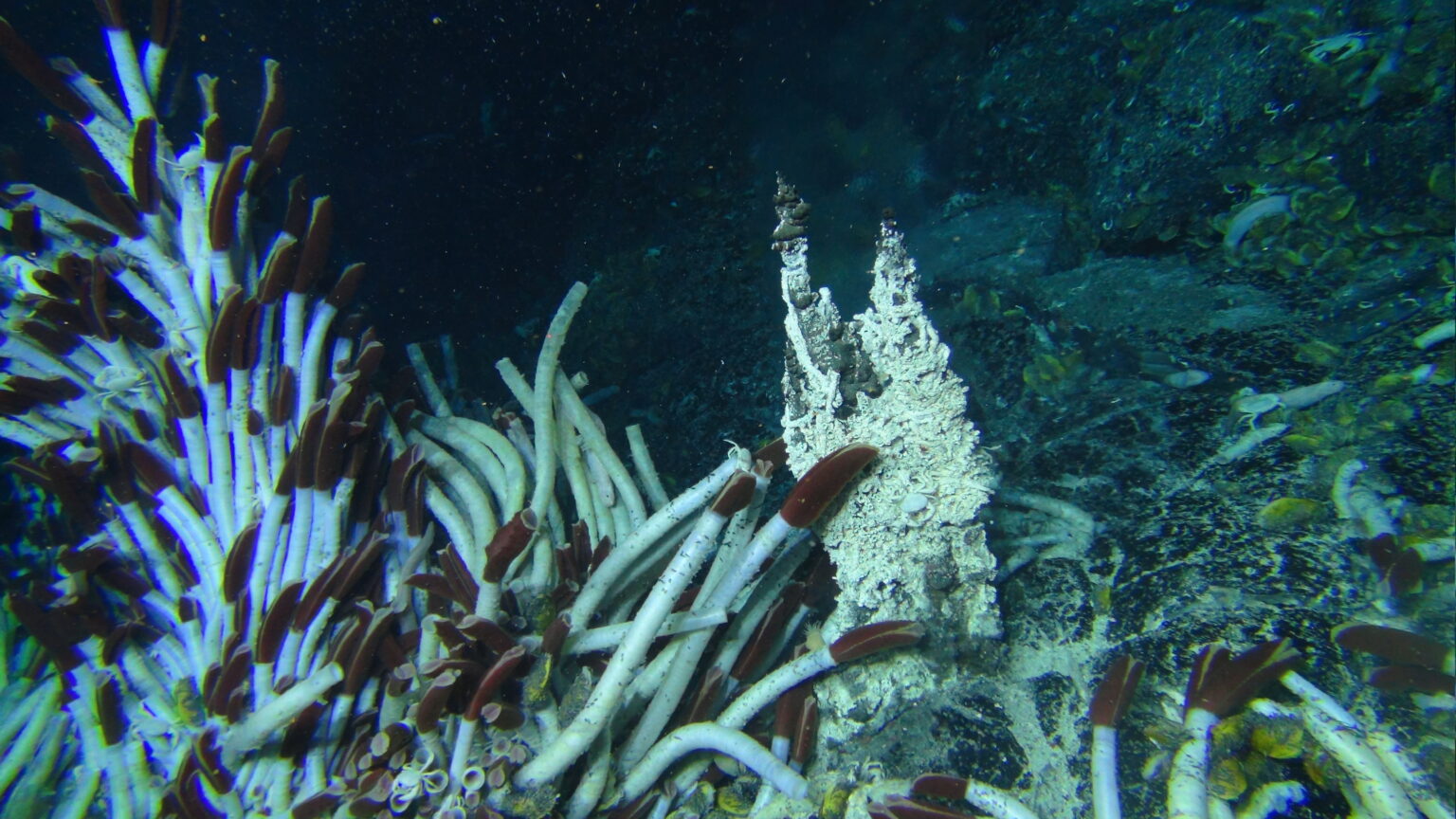Microorganisms are found even in harsh environments such as hydrothermally active areas of the deep sea where sunlight does not reach. They generate energy by utilizing chemicals dissolved in hydrothermal fluids emanating from the seabed. Assistant Professor Sayaka Mino of the Faculty of Fisheries Science has discovered a new species of bacteria from the deep sea, which she hopes to utilize in efforts to reduce greenhouse gases. She is also interested in how climate change will affect the environment of deep-sea microorganisms. She spoke about the amazing and fascinating ecology of organisms living in the deep sea.

Microorganisms living in the extreme environment of the deep sea
My research focuses on microorganisms that inhabit deep-sea hydrothermal vents. Deep-sea hydrothermal vents are areas where seawater is heated by magmatic activity on the seafloor, becoming hydrothermal water, which spews out through fissures in the seafloor. It is a very unique environment, and because of the total absence of sunlight, special ecosystems exist and many creatures can only be found there.
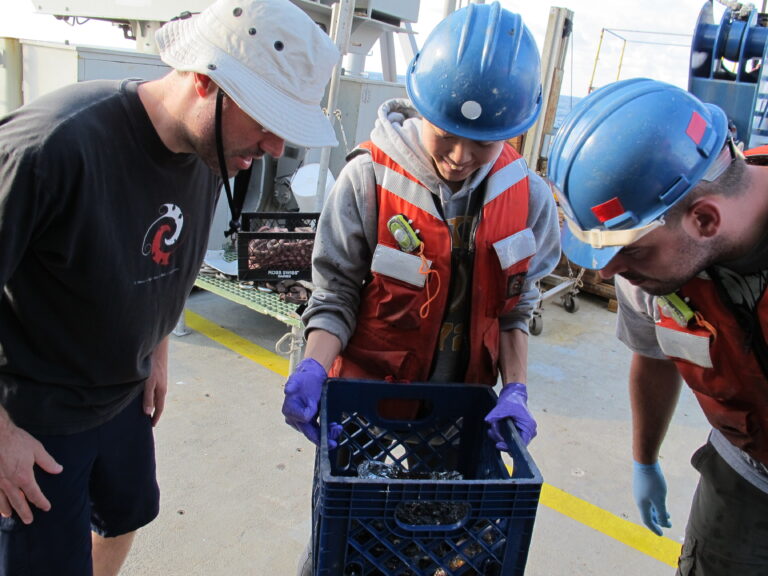
My research is often carried out in collaboration with research institutions that have submersibles capable of deep-sea research. Samples are taken from depths of 1,000 m to more than 2,000 m.
Specialized microorganisms in deep-sea hydrothermal vents use chemicals contained in hydrothermal fluids to obtain energy. My research focuses on microorganisms that can use carbon dioxide (CO2) as a carbon source and sulphur and hydrogen as energy sources, but recently I have also been focusing on microorganisms that use the greenhouse gas nitrous oxide (N2O) to grow. Our research has shown that microorganisms living in hydrothermal vent fields also have the ability to reduce N2O and convert it into harmless nitrogen gas. We are exploring the possibility of using these properties to address environmental problems.
New microorganisms that reduce greenhouse gases
Nitrous oxide is the third most potent greenhouse gas, after carbon dioxide and methane, and is also known to be oxidized by radiation such as UV light to become nitric oxide (NOx), an ozone-depleting substance. For example, N2O is emitted from the use of nitrogen fertilizers in agriculture, and from the combustion of biomass fuels—which are considered carbon-neutral. This has led to an imbalance of N2O in the earth’s natural environment and an increase in its impact as a greenhouse gas. Reducing N2O emissions is a challenge that needs to be addressed on a global scale.
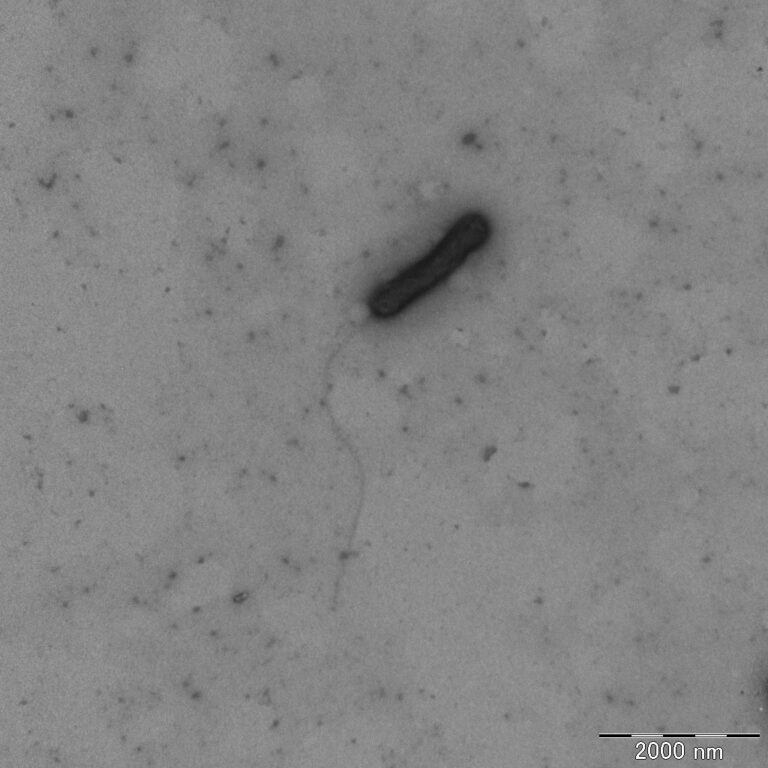
We have discovered a new species of thermophilic bacteria that can live in high-temperature environments from the deep-sea hydrothermal vents of the Okinawa Trough near Japan. Culture experiments showed that the new species of bacteria has a higher ability to reduce N2O than previously discovered related species. These bacteria can also utilize CO2 as a carbon source for building their own bodies, which means that they may be able to reduce two greenhouse gases, CO2 and N2O, at the same time.

Deep-sea hydrothermal vents are a treasure trove of unexploited microbial resources, and I am sure that there are still microorganisms that are highly effective in reducing greenhouse gases and that demonstrate high performance in conditions which other microorganisms cannot tolerate. By searching for such microorganisms and elucidating the molecular mechanisms peculiar to them, environmental remediation technology using microorganisms is not just a dream. If such technology can be realized by using microorganisms themselves or by utilizing enzymes they produce, it could make significant contributions to the reduction of nitrous oxide emissions.
The whereabouts of microorganisms scattered in the vast ocean
My research also focuses on the dispersal of microorganisms. Due to their small size and large populations, traditionally, microorganisms were thought to disperse all over the planet. However, it is now known that there are actually limits to the areas of dispersal, and that geographical isolation can lead to speciation. As microorganisms are swept away by ocean currents, changes in ocean currents can affect the interaction and dispersal of microorganisms.

Ocean currents change significantly due to ocean acidification, increased temperatures, and changes in the amount of oxygen dissolved in seawater. I am also conducting research with regard to the dispersal and evolution of microorganisms in shallow- and deep-sea hydrothermal vent environments. I feel that ongoing research such as this is necessary to understand how changes in the marine environment due to climate change will impact the diversity of microorganisms.
The overwhelming power and mystery of the Earth’s deep sea
In my fieldwork, I participate in deep-sea research cruises in the Okinawa Trough and the Mariana Sea area, collecting samples using unmanned and manned submersibles. Manned submersibles are quite limited in terms of opportunities, as only a few people can be on board at a time. I once went down to a depth of about 2,500 m off the USA in a manned submersible. On the seabed, there are chimney structures formed by mineral precipitation caused by cooling of hydrothermal fluids. A unique ecosystem has formed around them, inhabited by strange and bizarre creatures. Seeing these huge chimneys and the hot water gushing out of them so vigorously, I felt the overwhelming power and pulse of the earth, which I do not experience in everyday life, and I also felt empowered myself.
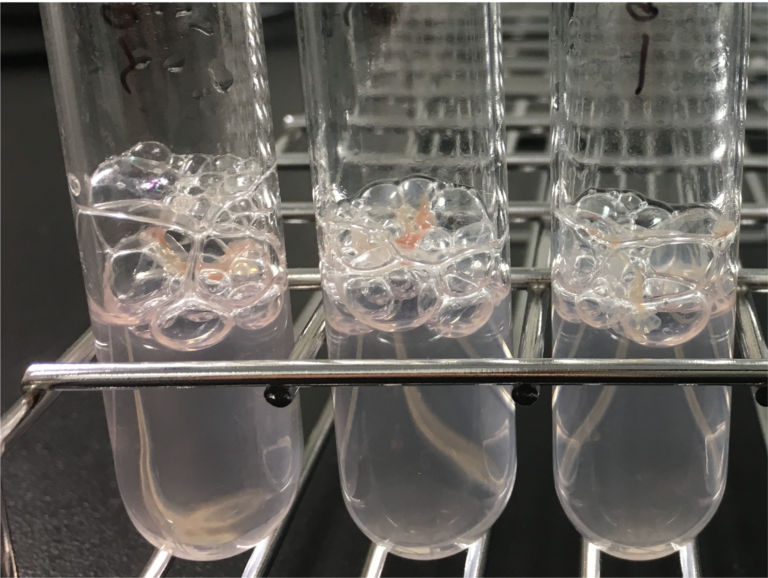
The microorganisms are two to three micrometers in size and invisible to the naked eye, so it is not immediately obvious what is being collected. We take the sample back to the laboratory and experiment with the culture of microorganisms under several different temperature conditions. Discovering new micro-organisms from deep-sea hydrothermal active zones is very exciting. In particular, the moment when a microorganism with a previously unreported metabolism is grown in culture by my hand, I feel the joy of having made a new discovery that I alone, in the entire world, know about.
Fascination with tubeworms led to a career as a researcher
I have loved living things since I was a child, and liked to go out and catch and observe insects and other organisms. The hydrothermal vent environment of the deep sea was a place I longed to visit, and it all started when I first saw a tube worm in a TV film. They are a species of worm that has a really strange shape, with a tubular body and red gills. They can grow up to two metres long, and are abundant around hydrothermal vent environments. They are organisms that live in symbiosis with microorganisms inside their bodies, which produce organic matter that nourishes them. I know some people think they are disgusting, but I longed to see creatures I had never seen before. When I actually dived into the deep sea and saw the tubeworm colony, it was very impressive, and I was reminded of the marvels of creatures that have learnt how to adapt to the dark environment of the seabed without being noticed.
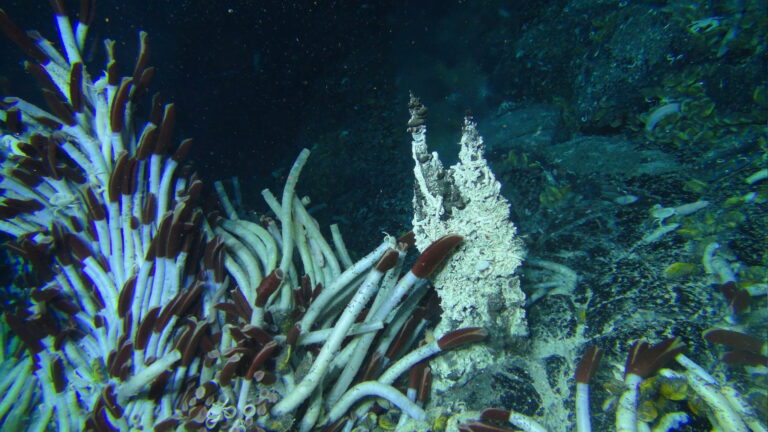
My research has the potential to help us understand the important role of microorganisms in, and open up new avenues for, solving environmental problems. We must not forget that microorganisms support the Earth’s ecosystems. I want to make the importance of these marginal microorganisms widely known and clarify their role through my research.
I want young researchers and children to keep their curiosity and interest alive and to go out and try different things so that they can understand with their own five senses.
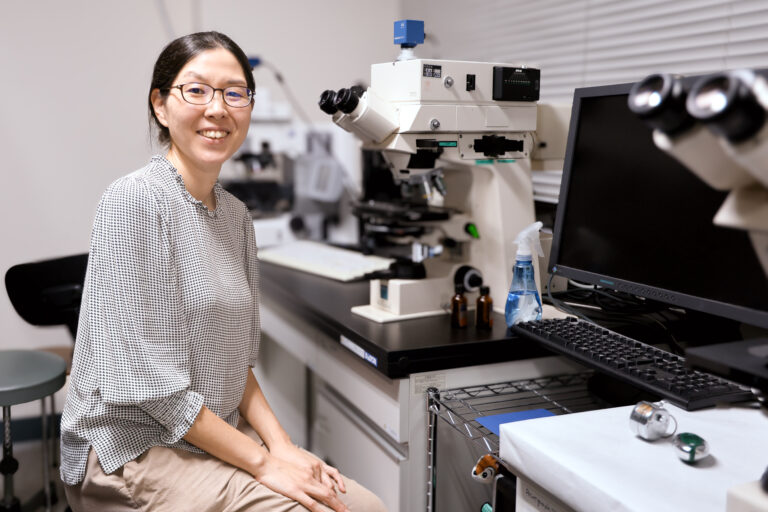
A change of pace in Hokkaido’s nature
When I feel stuck in my research, I refresh myself by enjoying the beautiful nature of Hokkaido. I particularly like the view from Higurashiyama in Nishi-Onuma, Nanae Town, a 40-minute drive from the Hakodate campus where the Faculty of Fisheries is located; it helps me to calm down. Hokkaido’s natural environment is a great support for my research. When I go to the sea, I realize how tiny I am. Even though I am such a small person, I appreciate the opportunity to contribute to society through my research.
Then, when I go to sea to collect samples, I am joined by researchers from a diverse range of fields. Communicating with researchers from diverse fields, such as those studying large organisms, geology and the chemical composition of hydrothermal fluids, is an experience that cannot be had if you are confined to a laboratory, and I think it is one of the most enjoyable aspects of this research.
At Hokkaido University, there is an atmosphere in which if you express your desire to do something, someone will support you. I feel that the environment has always been supportive, from when I was a student to now when I work as a teacher, and I think the appeal of Hokkaido University is that it is easy to express your opinions and discuss even the smallest matters.
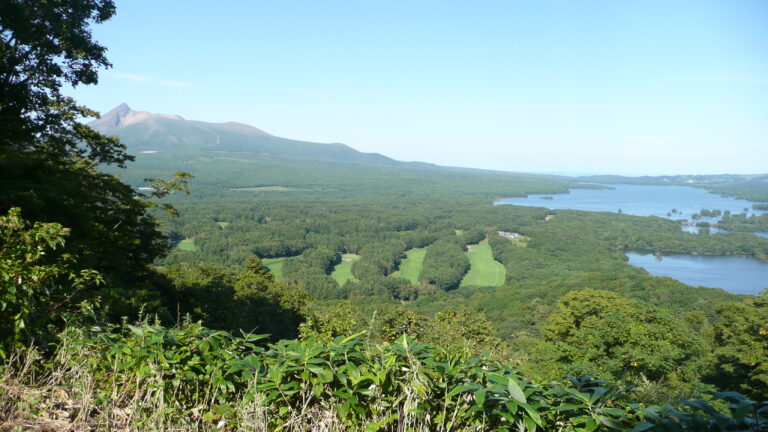
Written by Yuka Saito
Published on June 27, 2025

